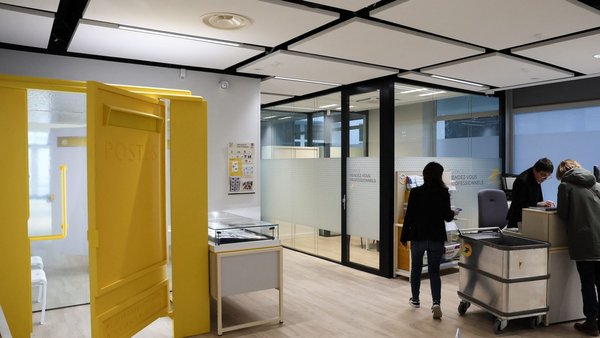Campaign of the Week
Vi weaves phone numbers into sacred bracelets for lost Kumbh Mela pilgrims /
Indian telco turns traditional prayer beads into emergency contact system, helping 21% more pilgrims reunite at religious festival
The Hindu pilgrimage Maha Kumbh Mela is the world’s biggest religious festival, attracting 500 million pilgrims to the riverbanks of northern India over a 45-day period (this year it ran from 13 January to 26 February).
Moving in such an enormous crowd leads an average of 5,000 people to get lost every day. As 150 million Indians don’t own a phone and share one for the whole family, finding those reported lost during the gathering can be extremely difficult. That is especially true for elderly people and children. Many people jot down phone numbers on paper scraps or on their palms, only to have them washed away during the holy dip, leaving them with no means of contacting their family.
To help the thousands of lost people find their way back to their next of kin, Indian telecommunications company Vodafone Idea, commonly referred to as Vi, engraved single digits on sacred beads worn by pilgrims that they could arrange to form any phone number.
Rudraksha and Tulsi bead bracelets are sacred symbol worn by all festival goers. They are seen as a mark of devotion and protection and are never taken off once tied on someone’s wrist.
The Guardian Beads, ethically sourced and waterproof, were distributed at key entry points of the gathering. They were made in partnership with Ogilvy Mumbai.
Results / According to the agency, 21% more people reunited with their families compared to previous Kumbh Melas. The campaign resulted in an incremental revenue of $820,000.
In Uttar Pradesh East (UP East), India’s largest telecom circle, Vi reversed its declining brand perception, leading to a 2.1% reduction in user churn, a 30% increase in retention and a 7% lift in brand consideration. This improvement contributed to a 2.5% increase in average revenue per user and a 3.3% revenue growth in the region.

Contagious Insight /
Change the playing field / India’s telecom market is brutally competitive. As Ogilvy India CCO Kainaz Karmakar puts it, ‘India has one of the most saturated telecom markets globally. With 95% of users on prepaid plans, loyalty is rare. Users frequently switch providers based on network perception rather than price – India offers the world’s third-cheapest data at ~$0.17/GB.’ In that context, most telcos lean on hard claims (coverage maps, pricing, now 5G rollouts) to win ground.
But Vi didn’t have that luxury. ‘In a category where 5G had become the defining table stakes, Vi lacked the technological advantage that competitors aggressively marketed. As a number three brand in a four-player market and a bleeding subscriber base, Vi did not have the option to wait for its own 5G to come,’ said Karmakar.
So instead of playing the tech game, Vi changed the rules. It shifted the battleground from features to feelings, using a low-tech product – beads printed with a family phone number – to solve a high-stakes human problem. Guardian Beads helped reunite lost family members during Kumbh Mela, reframing the brand’s value as connection, not coverage.
In a market where network perception drives switching and brand loyalty is weak, creating emotional relevance through cultural utility gives Vi a way to stay visible and valued, even without a product edge.
Go low-tech for inclusion / The Guardian Beads campaign works because it doesn’t force digital behaviour in a context where that would be unrealistic. It meets people where they are – not through apps or touchpoints, but through a sacred object they already wear. By printing contact details onto prayer beads, Vi turned something symbolic into something practical, without making it feel promotional or alien.
‘Budget constraints and lack of digital literacy dictates that these older members of family are deprioritised when it comes to spending on their personal mobile handset,’ Ogilvy India CCO Harshad Rajadhyaksha told us.
This is the audience most brands overlook, not because they don’t care, but because they don’t show up in data or on devices. The beads offer a way to include them meaningfully in the brand’s idea of connection, without requiring phones, screens or new habits. That’s not just considerate, it’s strategically smart. By designing for the edge case, Vi found a culturally fluent way to extend its brand promise and build trust with a broader base.
Want more of the same? /
We don’t just write about best-in-class campaigns, interviews and trends. Our Members also receive access to briefings, online training, webinars, live events and much more.







